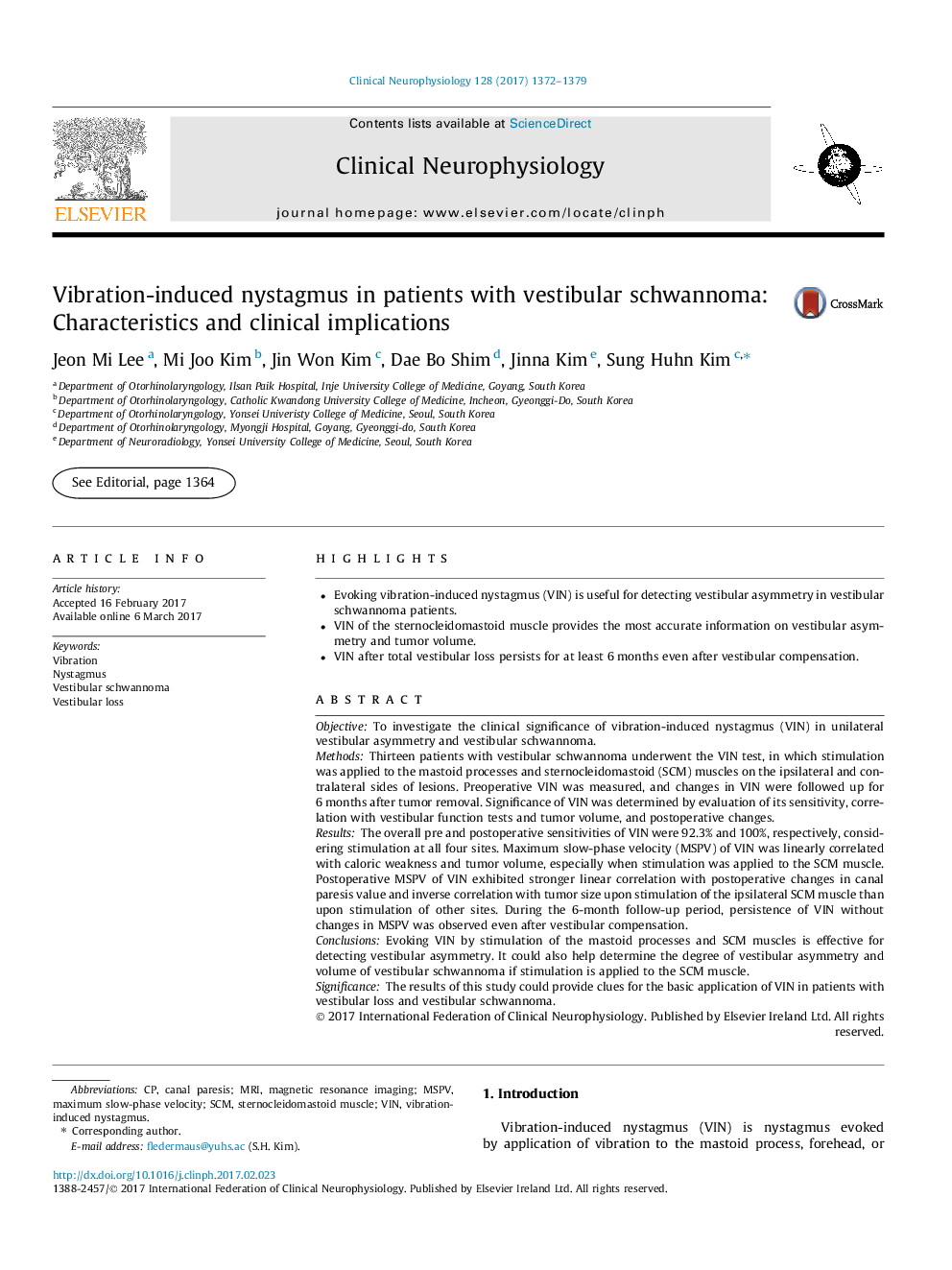| کد مقاله | کد نشریه | سال انتشار | مقاله انگلیسی | نسخه تمام متن |
|---|---|---|---|---|
| 5627835 | 1406356 | 2017 | 8 صفحه PDF | دانلود رایگان |
- Evoking vibration-induced nystagmus (VIN) is useful for detecting vestibular asymmetry in vestibular schwannoma patients.
- VIN of the sternocleidomastoid muscle provides the most accurate information on vestibular asymmetry and tumor volume.
- VIN after total vestibular loss persists for at least 6Â months even after vestibular compensation.
ObjectiveTo investigate the clinical significance of vibration-induced nystagmus (VIN) in unilateral vestibular asymmetry and vestibular schwannoma.MethodsThirteen patients with vestibular schwannoma underwent the VIN test, in which stimulation was applied to the mastoid processes and sternocleidomastoid (SCM) muscles on the ipsilateral and contralateral sides of lesions. Preoperative VIN was measured, and changes in VIN were followed up for 6Â months after tumor removal. Significance of VIN was determined by evaluation of its sensitivity, correlation with vestibular function tests and tumor volume, and postoperative changes.ResultsThe overall pre and postoperative sensitivities of VIN were 92.3% and 100%, respectively, considering stimulation at all four sites. Maximum slow-phase velocity (MSPV) of VIN was linearly correlated with caloric weakness and tumor volume, especially when stimulation was applied to the SCM muscle. Postoperative MSPV of VIN exhibited stronger linear correlation with postoperative changes in canal paresis value and inverse correlation with tumor size upon stimulation of the ipsilateral SCM muscle than upon stimulation of other sites. During the 6-month follow-up period, persistence of VIN without changes in MSPV was observed even after vestibular compensation.ConclusionsEvoking VIN by stimulation of the mastoid processes and SCM muscles is effective for detecting vestibular asymmetry. It could also help determine the degree of vestibular asymmetry and volume of vestibular schwannoma if stimulation is applied to the SCM muscle.SignificanceThe results of this study could provide clues for the basic application of VIN in patients with vestibular loss and vestibular schwannoma.
Journal: Clinical Neurophysiology - Volume 128, Issue 7, July 2017, Pages 1372-1379
